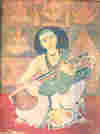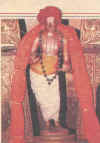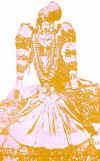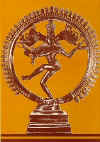
Sri Pothuluri Veera Brahmendra swami, popularly known as Brahmamgaru, was the Hindu saint and philosopher, born in 1610 in Kadapa district of Andhra Pradesh. Brahmamgari Aradhana utsavalu are held on Vaishakha Shukla Dasami (tenth day in bright fortnight ofVaishakha masam). In 2012, Veerabrahmendra swami Aradhan utsavam is held on May 1. On this day, Pothuluri Veerabrahmam was entered into Jeeva Samadhi.
Veerabrahmendra swami is the author of Kalagnanam, a collection of predictions about future or prophecies in Telugu. It also tells us about the arrival of Kalki avataram of Lord Vishnu in the form of Sri Veerabhoga Vasantaraya
Srimadvirat Potuluri Veerabrahmendra Swami
Veerabrahmendra Swami is one of the great saint of India. He is a person who has the knowledge of past, present and future. He is often called as the "Nostradamus of India". He told many forecastings of which all were proved correct. He forecasted events for some upto the end of Kaliyuga starting from his reign.
People call him by several names like
1. Srimadvirat Potuluri Veerabrahmendra Swami,
2. Veerabrahmam
3. Brahmam garu
4. Veerambottlayya
5. Veera guruvu
6. Veerabrahmayya.
In Banaganapalli and Kandimallayyapalli, VeeraBrahmendra Swami lived around 400 years ago. He is a person with knowledge of past present and future. He is still alive in his jeeva samadhi situated in Kandimallayyapalli. There is a mattam called as "Brahmam gari mattam" which is situated here in Kandimallayyapalli. He has written a lot of books on palm leaves. All these palm leaf books tell the future of the world till the end of Kali yuga. These book tell us about How people get transformed in coming years, what catastrophical events occur, Political, social,economic changes that will occur in the society, biologocal and physiological changes that will occur in plant and animal kingdoms, geographical changes, wars, explosions etc and many other wonders of the world which have occured and will occur in future. The knowledge in these books is called as "Kaalagnaanam" (Knowledge of Time). This will also be called by people as "Saandhra Sindhu Vedam".
Sri Potuluri Veera Brahmendra Swami is the author of Kalagnana, collections of prophecies on palm leaves. Most of his predictions came true and many are yet to happen. Also known as Indian Nostradamous by west, he said he will come again to this earth as 'Veera Bhoga Vasantharaya' and that would mean the end of life on earth. He prophesized that before his arrival the world would be in a very chaotic condition.Veera Brahmendra Swami left his body with his self imposed 'Jeeva Samadhi'. He went into Samadhi when he was still alive and asked to close the stone.
Kalagnana an important text in Telugu that predicts the arrival of Kalki in the form of Sri Veerabhoga Vasantaraya. A fifteen year old Muslim boy, Sheik Saheb came to the Ashram to become a disciple of Veera Brahmendra Swami. He renamed the boy Siddhayya who turned out to be the most loyal and devoted of his disciples. Siddhayya is none other than Ananda Bhairava and in accepting him as disciple Sri Brahmendra Swami was fulfilling a boon he granted earlier. Brahmendra Swami gave Siddhayya initiation into many spiritual practices including Taraka Yoga.
Kalagnana an important text in Telugu that predicts the arrival of Kalki in the form of Sri Veerabhoga Vasantaraya. A fifteen year old Muslim boy, Sheik Saheb came to the Ashram to become a disciple of Veera Brahmendra Swami. He renamed the boy Siddhayya who turned out to be the most loyal and devoted of his disciples. Siddhayya is none other than Ananda Bhairava and in accepting him as disciple Sri Brahmendra Swami was fulfilling a boon he granted earlier. Brahmendra Swami gave Siddhayya initiation into many spiritual practices including Taraka Yoga.
Sri veerabrahmendra swami samadhi is located in Kandhimallayapalle,Cuddapah district, Andhra pradesh, india.
Sri Veera Brahmendhra Swami's Few Childhood Events
Sri Veera Brahmendhra Swami's Few Childhood Events
Few events of Sri Veera Brahmendra Swami’s childhood that he was the son of Sri Paripurnachari and Smt Prakruthamba and that he grew up under the care of foster parents. Sri Veera Bhojacharya head of the Papaghni math near Nandikonda and his wife Smt. Veera-Papamba. Lovingly called “Veeram Bhotlayya” he used to impress everyone by his extraordinary intelligence and spiritual bent of mind. When in his thirteenth year his foster father, died he not only bore the blow calmly but proved a pillar of strength to his desolate mother. His philosophic talksmade her understand the illusory nature of attachments and the continuum of consciousness in life and death. Realising that her son is an enlightened soul, Papamba gave him permission to leave home and go on a pilgrimage to holy places. While Veeram Bhotlayya was visiting Harihara Kshetra, he came across a yogi named AnandaBhairava. Anandabhairava confessed to Veeram Bhotlayya that he took to Sanyasa as a mark of repentance on his inadvertent killing of a cow. To liberate him from the sin of killing a cow Veeram Bhotlayya initiated him into Dwadasakharimantra and gave him the boon that in his next birth he will be born in a family of cotton growers and when he comes of age he would become his (Veeram Bhotlayya’s) chief disciple.
The next recorded evidence available about Sri Veera Brahmendra Swami is his stay as a sage in a Matt built for his use in Banaganapalli by an elderly devotee, Acchamma. Legend has it that Acchamma who initially entrusted Veeram Bhotlayya with the task of tending cows was surprised to hear that the young man was spending more of his time inside a cave scribbling something on palm-leaf parchments. She followed him one-day and saw him draw a line round the cattleand command them to stay within the line. The cattle implicitly obeyed his command and Acchamma realised that the boy was not an ordinary shepherd but must be a God man of great powers. She walked into the cave which was bright and aglow as with the light of a thousand suns, and prostrating herself at his feet begged to be excused for having treated him as a menial. Veeram Bhotlyya gave her initiation into ‘Dwadashakshari’ mantra, and begged by her consented to stay for some more time in Banaganapalli. Acchamma was one of the few who were given the privilege of listening to the future predictions written in the form of chants by Sri Veeram Bhotlayya. During his stay at Banagapalli math, Veeram Bhotlayya used to bury the palmleaf parchments in a secret place underground and visitors to this day make it a point to pay homage to the Tamarind tree that grew in that spot. During the twelve years that he stayed in that village Sri Veeram Bhotlayya performed many miracles. He restored eyesight to Acchamma’s son, Brahmanandareddy by suggesting a retribution for Reddy’s sins of a past life. Once the Nawab of that region who was jealous of the fame of Veeram Bhotlyya sent word to him and after a hypocritical show of respect and Courtesy, presented him a platter covered with a muslin cloth.
Knowing that meat was taboo to the Hindu sage he still filled the plate with dishes made of meat. Veeram Bhotlayya accepted the plate and removed the cloth cover. To the utter amazement of the Nawab and his courtiers the platter was heaped with beautiful flowers with no trace of meat anywhere. The Nawab fell at his feet begging forgiveness and donated land for the founding of an Ashram by Veeram Bhotlayya.. Annajayya, a Brahmin disciple used to look after the math and Ashram and it is he who made the predictions of his master known to the public.
In the twelth year of his stay, entrusting the change of the Ashram to Annajayya, Veeram Bhotlayya left for ‘Kandimallaya Palle, a village in Cuddapa Taluq. He used to work as a carpenter and soon became the spiritual leader of the village community. While visiting the temple in a near by hamlet, Pedakomerla, Veeram Bhotlayya chanced to come across a funeral procession. Going near the bier Veeram Bhotlayya sprinkled holy ash (Vibhuthi) on the corpse and to the amazement of everyone the dead man, one Mr. Reddy, got down and bowed to the feet of Veeram Bhotlayya. This created a sensation in the village and most of the villagers began worshippingVeeram Bhotlayya as the very incarnation of God. A few non-believers wanted to play a trick on him. One of them lay down on a bier pretending to be dead and the rest approached Veeram Bhotlayya with the request that their friend’s life be revived. Wishing to teach them a lesson Veeram Bhotlayya said their friend could not be brought back to life. The non believers gleefully asked their friend to sit up but were shocked to see that he was really dead. Moved by their pitiful pleas for forgiveness and help, Veeram Bhotlayya brought the young man back to life and this won for him the respect and admiration of everyone .
In the twelth year of his stay, entrusting the change of the Ashram to Annajayya, Veeram Bhotlayya left for ‘Kandimallaya Palle, a village in Cuddapa Taluq. He used to work as a carpenter and soon became the spiritual leader of the village community. While visiting the temple in a near by hamlet, Pedakomerla, Veeram Bhotlayya chanced to come across a funeral procession. Going near the bier Veeram Bhotlayya sprinkled holy ash (Vibhuthi) on the corpse and to the amazement of everyone the dead man, one Mr. Reddy, got down and bowed to the feet of Veeram Bhotlayya. This created a sensation in the village and most of the villagers began worshippingVeeram Bhotlayya as the very incarnation of God. A few non-believers wanted to play a trick on him. One of them lay down on a bier pretending to be dead and the rest approached Veeram Bhotlayya with the request that their friend’s life be revived. Wishing to teach them a lesson Veeram Bhotlayya said their friend could not be brought back to life. The non believers gleefully asked their friend to sit up but were shocked to see that he was really dead. Moved by their pitiful pleas for forgiveness and help, Veeram Bhotlayya brought the young man back to life and this won for him the respect and admiration of everyone .
Veeram Bhotlayya accorded to a few seekers of that village knowledge of his Kala Jnana chants pertaining to events that would take place in the first five thousand years of Kali Yuga. Sivakotayya was one of those seekers and he reverentially offered his dauaghter Govindamma as bride to Veeram Bhotlayya. Hearing that Govindamma had chosen to remain unmarried all these years as it was her wish to marry a man who is an embodiment of Divinity, Veeram Bhotlayya smilingly gave his consent. After the marriage the couple returned to Kandimallya Palli and from there left on a pilgrimage to holy places. After a shortvisit to Banagnapalli they returned to Kandimallayya palli. Devotees built an Ashram for them and Veeram-Bhotlayya began to be worshipped by devotees as Veeram- Brahmam. The couple were blessed with four sons and a daughter. All the children were devout like their parents and took active part in the spiritual programme conducted in the Ashram. One day a fifteen year old Muslim boy, Sheik Saheb came to the Ashram to become a disciple of Sri Brahmam. Brahmendra Swami's sons refused to allow him in because he was a Muslim. Brahmendra Swami rebuked them for their intolerance and allowed the boy to enter. He renamed the boy Siddhayya who turned out to be the most loyal and devoted of his disciples. Siddhayya is none other than Ananda Bhairava and in accepting him as disciple Sri Brahmendra Swami was fulfilling a boon he granted earlier. Brahmendra Swami gave Siddhayya initiation into many spiritual practices including Taraka Yoga.
Accompanied by his disciples Sri Veera Brahendra Swami made a tour of all the important districts in the Andhra, Telangana and Rayalaseema regions. He halted for some time at Hyderabad and convening a meeting of goldsmiths. He gave discourses on the three importantgoals of life in the outer, middle and inner planes. He surprised everyone in the court of the Nawab by lighting a lamp that had water in it, instead of oil. After predicting the future of the Hyderabadi regime he started home. On the way back, to teach a lesson to some of the disciples who resented what they thought was Brahmendra Swami favouritism to Siddayya, he pointed to the carcass of a dog and ordered his disciples to eat it. The carcass was decomposed, wormridden and emitting an unbearably foul smell. No one wanted to go near it. Siddayya sat by its side and began eating it with relish as if it was a succulent sweet dish. This demonstration of Siddayya's implicit obedience to the words of the Guru shamed the disciples into repentance. One more instance of Sri Veera Brahmendra Swami miraculous powers was revealed to the disciples when a Brahmin couple fell on the feet of Swamiji and begged him to cure the Brahmin of the dreadful disease of leprosy. Brahmendra Swami not only cured him but gave the couple initiation, blessed them and sent them home in a happy frame of mind.
Accompanied by his disciples Sri Veera Brahendra Swami made a tour of all the important districts in the Andhra, Telangana and Rayalaseema regions. He halted for some time at Hyderabad and convening a meeting of goldsmiths. He gave discourses on the three importantgoals of life in the outer, middle and inner planes. He surprised everyone in the court of the Nawab by lighting a lamp that had water in it, instead of oil. After predicting the future of the Hyderabadi regime he started home. On the way back, to teach a lesson to some of the disciples who resented what they thought was Brahmendra Swami favouritism to Siddayya, he pointed to the carcass of a dog and ordered his disciples to eat it. The carcass was decomposed, wormridden and emitting an unbearably foul smell. No one wanted to go near it. Siddayya sat by its side and began eating it with relish as if it was a succulent sweet dish. This demonstration of Siddayya's implicit obedience to the words of the Guru shamed the disciples into repentance. One more instance of Sri Veera Brahmendra Swami miraculous powers was revealed to the disciples when a Brahmin couple fell on the feet of Swamiji and begged him to cure the Brahmin of the dreadful disease of leprosy. Brahmendra Swami not only cured him but gave the couple initiation, blessed them and sent them home in a happy frame of mind.
By the privilege of association with Godmen, disciples also acquire spiritual stature. This is proved in the life ofSiddhayya who was fortunate to learn from Brahmendra Swamy the significance of reincarnation and the way to achieve liberation form the cycle of births. The Nawab of Cuddapa was angry that the Muslim born Siddhayya became the disciple of a Hindu saint and sent word to Siddhayya to come and give an explanation for his conduct. Siddhayya’s impassioned speech on Adwaita not only placated the Musilm countries but converted all of them into devotees of Brahmendra Swami. The Nawab felt piqued that Siddhayya did not bow down to him and rebuked him for his insolence. Siddhayya them ordered the attendants of the Nawab to bring into the hall a big black chunk of rock. When it was brought in Siddhayya bowed down to it and immediately it broke into a thousand pieces. Siddhayya told the Nawab that had he bowed to him, the Nawab’s head also would have broken into pieces. Understanding that Siddhayya had now acquired such spiritual status that only Brahmendra Swami was fit to receive obeisance from him the Nawab begged for forgiveness.
Once, over hearning Brahmendra Swam’s expounding of the six energy centres (Chakras) to Siddhayya, the cobbler Kakkayya wanted to see for himself thedeities presiding over each of the chakras. He murdered his sleeping wife and dissected her body. Failing to see any deities he rushed to Brahmendra Swami fell his feet and weeping made a confession of what he did Taking pity on him he accompanied him to his house and ordered Siddhayya to follow him. Once inside the hut Swamiji invoked the deities of the chakras and showed them to Siddhayya and Kakkayya and then with a touch of his hand he made whole the dissected body of Kakkayya’s wife and restored her to life.
Among the hundreds of miracles performed by Brahmendra Swami mention may be made of his gulping down molten iron, of teaching a lesson to the arrogant Brahmins of Nandyal by making Siddhayya eat up all the rice they prepared for serving at a feast, of describing to a Nawab the features of a colt still in the womb of its mother, of proving to a group of hostile scholars that there is no scriptural injunction against non Brahmins’ learning and reciting Vedas.
Once a group of thieves who entered the Ashram at dead of night to loot it, lost their eyesight. Next day taking pity on the blind robbers Swamiji talked to them about the need for honesty and right living and restored vision to them. At another time when, without telling him his wife Govindamma cooked payasam to be offered to Goddess Poleramma made the deity come in person to partake of the offering. On the last day of his earthly existence he gave trustee ship of the Ashram to his son Govindachari and then told his wife that all their sons will meet with an early death, that there would be no progeny to supervise the Ashram and that theirs daughter’s descendants would take charge of the math. That day the deliberately sent Siddhayya on an errand to collect flowers for the worship of God because he knew that Siddhayya cannot bear the sight of his beloved Guru’s dying. When Siddhayya came to know of Brahmendra Swami’s death, he was overcome by grief and tired to commit suicide. Taking pity on him Brahmendra Swamiji coae out of the grave to present him with his sceptre, sandals, ring and cane. He blessed him with clairvoyance and commanded him to go to the village Mudumala get married and spend his life in the Rajayoga path. Siddhayya obeyed everyone of these commands.
Once a group of thieves who entered the Ashram at dead of night to loot it, lost their eyesight. Next day taking pity on the blind robbers Swamiji talked to them about the need for honesty and right living and restored vision to them. At another time when, without telling him his wife Govindamma cooked payasam to be offered to Goddess Poleramma made the deity come in person to partake of the offering. On the last day of his earthly existence he gave trustee ship of the Ashram to his son Govindachari and then told his wife that all their sons will meet with an early death, that there would be no progeny to supervise the Ashram and that theirs daughter’s descendants would take charge of the math. That day the deliberately sent Siddhayya on an errand to collect flowers for the worship of God because he knew that Siddhayya cannot bear the sight of his beloved Guru’s dying. When Siddhayya came to know of Brahmendra Swami’s death, he was overcome by grief and tired to commit suicide. Taking pity on him Brahmendra Swamiji coae out of the grave to present him with his sceptre, sandals, ring and cane. He blessed him with clairvoyance and commanded him to go to the village Mudumala get married and spend his life in the Rajayoga path. Siddhayya obeyed everyone of these commands.
At the time of Brahmendra Swami’s advent, India was plunged in religious feuds between Hindus and Muslims. Humanism was crushed in the name of the illusory supremacy of caste. Brahmendra Swami preached the religion of love which cuts across all man made barrlers of creed, sect, and caste. His disciples included Brahmins like Annajayya, Muslims like Siddhayya and ‘untouchables’ like Kakkayya. His progressive outlook is reflected in managing a mature maiden like Govindamma at a time when child marriages were the accepted social convention. Most Nawabs of the time were his ardent devotees and this helped in promoting communal harmony. After he left the physical body, hundreds of Brahmendra Swami’s disciples propagated his teachings and travelled from one place to another chanting the predictions written by him.
Kalagnanam
Kalagnanam
Sri Potuluri Veera Brahmendra Swami.
The next recorded evidence available about Sri Veeram Bhotlayya is his stay as a sage in a Matt built for his use in Banaganapalli by an elderly devotee, Acchamma. Legend has it that Acchamma who initially entrusted Veeram Bhotlayya with the task of tending cows was surprised to hear that the young man was spending more of his time inside a cave scribbling something on palm-leaf parchments. She followed him one-day and saw him draw a line round the cattleand command them to stay within the line. The cattle implicitly obeyed his command and Acchamma realised that the boy was not an ordinary shepherd but must be a God man of great powers. She walked into the cave which was bright and aglow as with the light of a thousand suns, and prostrating herself at his feet begged to be excused for having treated him as a menial. Veeram Bhotlyya gave her initiation into ‘Dwadashakshari’ mantra, and begged by her consented to stay for some more time in Banaganapalli. Acchamma was one of the few who were given the privilege of listening to the future predictions written in the form of chants by Sri Veeram Bhotlayya. During his stay at Banagapalli math, Veeram Bhotlayya used to bury the palmleaf parchments in a secret place underground and visitors to this day make it a point to pay homage to the Tamarind tree that grew in that spot. During the twelve years that he stayed in that village Sri Veeram Bhotlayya performed many miracles. He restored eyesight to Acchamma’s son, Brahmanandareddy by suggesting a retribution for Reddy’s sins of a past life. Once the Nawab of that region who was jealous of the fame of Veeram Bhotlyya sent word to him and after a hypocritical show of respect and Courtesy, presented him a platter covered with a muslin cloth.
Knowing that meat was taboo to the Hindu sage he still filled the plate with dishes made of meat. Veeram Bhotlayya accepted the plate and removed the cloth cover. To the utter amazement of the Nawab and his courtiers the platter was heaped with beautiful flowers with no trace of meat anywhere. The Nawab fell at his feet begging forgiveness and donated land for the founding of an Ashram by Veeram Bhotlayya.. Annajayya, a Brahmin disciple used to look after the math and Ashram and it is he who made the predictions of his master known to the public.
In the twelth year of his stay, entrusting the change of the Ashram to Annajayya, Veeram Bhotlayya left for ‘Kandimallaya Palle, a village in Cuddapa Taluq. He used to work as a carpenter and soon became the spiritual leader of the village community. While visiting the temple in a near by hamlet, Pedakomerla, Veeram Bhotlayya chanced to come across a funeral procession. Going near the bier Veeram Bhotlayya sprinkled holy ash (Vibhuthi) on the corpse and to the amazement of everyone the dead man, one Mr. Reddy, got down and bowed to the feet of Veeram Bhotlayya. This created a sensation in the village and most of the villagers began worshippingVeeram Bhotlayya as the very incarnation of God. A few non-believers wanted to play a trick on him. One of them lay down on a bier pretending to be dead and the rest approached Veeram Bhotlayya with the request that their friend’s life be revived. Wishing to teach them a lesson Veeram Bhotlayya said their friend could not be brought back to life. The non believers gleefully asked their friend to sit up but were shocked to see that he was really dead. Moved by their pitiful pleas for forgiveness and help, Veeram Bhotlayya brought the young man back to life and this won for him the respect and admiration of everyone .
Veeram Bhotlayya accorded to a few seekers of that village knowledge of his Kala Jnana chants pertaining to events that would take place in the first five thousand years of Kali Yuga. Sivakotayya was one of those seekers and he reverentially offered his dauaghter Govindamma as bride to Veeram Bhotlayya. Hearing that Govindamma had chosen to remain unmarried all these years as it was her wish to marry a man who is an embodiment of Divinity, Veeram Bhotlayya smilingly gave his consent. After the marriage the couple returned to Kandimallya Palli and from there left on a pilgrimage to holy places. After a shortvisit to Banagnapalli they returned to Kandimallayya palli. Devotees built an Ashram for them and Veeram-Bhotlayya began to be worshipped by devotees as Veeram- Brahmam. The couple were blessed with four sons and a daughter. All the children were devout like their parents and took active part in the spiritual programme conducted in the Ashram. One day a fifteen year old Muslim boy, Sheik Saheb came to the Ashram to become a disciple of Sri Brahmam. Brahmendra Swami's sons refused to allow him in because he was a Muslim. Brahmendra Swami rebuked them for their intolerance and allowed the boy to enter. He renamed the boy Siddhayya who turned out to be the most loyal and devoted of his disciples. Siddhayya is none other than Ananda Bhairava and in accepting him as disciple Sri Brahmendra Swami was fulfilling a boon he granted earlier. Brahmendra Swami gave Siddhayya initiation into many spiritual practices including Taraka Yoga.
Accompanied by his disciples Sri Veera Brahendra Swami made a tour of all the important districts in the Andhra, Telangana and Rayalaseema regions. He halted for some time at Hyderabad and convening a meeting of goldsmiths. He gave discourses on the three importantgoals of life in the outer, middle and inner planes. He surprised everyone in the court of the Nawab by lighting a lamp that had water in it, instead of oil. After predicting the future of the Hyderabadi regime he started home. On the way back, to teach a lesson to some of the disciples who resented what they thought was Brahmendra Swami favouritism to Siddayya, he pointed to the carcass of a dog and ordered his disciples to eat it. The carcass was decomposed, wormridden and emitting an unbearably foul smell. No one wanted to go near it. Siddayya sat by its side and began eating it with relish as if it was a succulent sweet dish. This demonstration of Siddayya's implicit obedience to the words of the Guru shamed the disciples into repentance. One more instance of Sri Veera Brahmendra Swami miraculous powers was revealed to the disciples when a Brahmin couple fell on the feet of Swamiji and begged him to cure the Brahmin of the dreadful disease of leprosy. Brahmendra Swami not only cured him but gave the couple initiation, blessed them and sent them home in a happy frame of mind.
By the privilege of association with Godmen, disciples also acquire spiritual stature. This is proved in the life ofSiddhayya who was fortunate to learn from Brahmendra Swamy the significance of reincarnation and the way to achieve liberation form the cycle of births. The Nawab of Cuddapa was angry that the Muslim born Siddhayya became the disciple of a Hindu saint and sent word to Siddhayya to come and give an explanation for his conduct. Siddhayya’s impassioned speech on Adwaita not only placated the Musilm countries but converted all of them into devotees of Brahmendra Swami. The Nawab felt piqued that Siddhayya did not bow down to him and rebuked him for his insolence. Siddhayya them ordered the attendants of the Nawab to bring into the hall a big black chunk of rock. When it was brought in Siddhayya bowed down to it and immediately it broke into a thousand pieces. Siddhayya told the Nawab that had he bowed to him, the Nawab’s head also would have broken into pieces. Understanding that Siddhayya had now acquired such spiritual status that only Brahmendra Swami was fit to receive obeisance from him the Nawab begged for forgiveness.
Once, over hearning Brahmendra Swam’s expounding of the six energy centres (Chakras) to Siddhayya, the cobbler Kakkayya wanted to see for himself thedeities presiding over each of the chakras. He murdered his sleeping wife and dissected her body. Failing to see any deities he rushed to Brahmendra Swami fell his feet and weeping made a confession of what he did Taking pity on him he accompanied him to his house and ordered Siddhayya to follow him. Once inside the hut Swamiji invoked the deities of the chakras and showed them to Siddhayya and Kakkayya and then with a touch of his hand he made whole the dissected body of Kakkayya’s wife and restored her to life.
Among the hundreds of miracles performed by Brahmendra Swami mention may be made of his gulping down molten iron, of teaching a lesson to the arrogant Brahmins of Nandyal by making Siddhayya eat up all the rice they prepared for serving at a feast, of describing to a Nawab the features of a colt still in the womb of its mother, of proving to a group of hostile scholars that there is no scriptural injunction against non Brahmins’ learning and reciting Vedas.
Once a group of thieves who entered the Ashram at dead of night to loot it, lost their eyesight. Next day taking pity on the blind robbers Swamiji talked to them about the need for honesty and right living and restored vision to them. At another time when, without telling him his wife Govindamma cooked payasam to be offered to Goddess Poleramma made the deity come in person to partake of the offering. On the last day of his earthly existence he gave trustee ship of the Ashram to his son Govindachari and then told his wife that all their sons will meet with an early death, that there would be no progeny to supervise the Ashram and that theirs daughter’s descendants would take charge of the math. That day the deliberately sent Siddhayya on an errand to collect flowers for the worship of God because he knew that Siddhayya cannot bear the sight of his beloved Guru’s dying. When Siddhayya came to know of Brahmendra Swami’s death, he was overcome by grief and tired to commit suicide. Taking pity on him Brahmendra Swamiji coae out of the grave to present him with his sceptre, sandals, ring and cane. He blessed him with clairvoyance and commanded him to go to the village Mudumala get married and spend his life in the Rajayoga path. Siddhayya obeyed everyone of these commands.
At the time of Brahmendra Swami’s advent, India was plunged in religious feuds between Hindus and Muslims. Humanism was crushed in the name of the illusory supremacy of caste. Brahmendra Swami preached the religion of love which cuts across all man made barrlers of creed, sect, and caste. His disciples included Brahmins like Annajayya, Muslims like Siddhayya and ‘untouchables’ like Kakkayya. His progressive outlook is reflected in managing a mature maiden like Govindamma at a time when child marriages were the accepted social convention. Most Nawabs of the time were his ardent devotees and this helped in promoting communal harmony. After he left the physical body, hundreds of Brahmendra Swami’s disciples propagated his teachings and travelled from one place to another chanting the predictions written by him.
Like Vemana’s teachings, the chants of Brahmendra Swami also are simple and evoke immediate emotional response from listeners. Some of Brahmendra Swami’s predictions are in prose form. Some are written as moral maxims. Some offer exposition on philosophy, spiritualism, and yoga practice. Some are written as couplets. Many poems in praise of Kalikamba have been written by Brahendra Swami. Some of these contain cryptic esoteric truths. These will be intelligible only to initiates in yoga. His songs are most popular among religious mendicants. As in scriptures like Bhavishyapurana, Bhagavatham and Harivamsam, his predictions are mostly about the historical, geographical and social changes that will take place towards the end of Kali Yuga. As is supposed to be the case with the western prophet Nostradamus, Brahmendra Swami’s predictions also have proved to be true. His chants make anticipatory references to British rule in India, the disintegration of the caste system, rapid strides in science and technology, invention of trains and automobiles, growing dependence on electricity and electronic gadgets, the advent of Mahatma Gandhi, widow remarriages and social acceptance of divorces, the fall of aristocracy and the mounting prominenceof weaker sections of society; Brahmendra Swami’s chants also mention that power in the millennium will be in the hands of women, and actors and that society will witness a proliferation of fakes and quacks and that there will be a general dwindling of moral values and that honest people would be at the mercy of criminals and rowdies. One positive feature about the chants of Brahmendra Swami is their envisaging of an egalitarian society where all class distinctions and caste division would be eroded and the gates of opportunity would be thrown open to all — the rich and the poor, men and women. As in Nostradamus in the Kala Jnana chants of Brahmendra Swami also freaks and deformities and monstrosities in nature, irrespective of their pertaining to the plant, animal or human kingdoms, are always mentioned as bad omens betokening disasters about to take place. Similarly comets and meteorites are used as indices of imminent social and historical upheavals. Laxity in pointless orthodoxy is condoned but dire warning is consistently used against straying from the path of Dharma. Both wars which are the outcome of human greed and hatred and calamities of nature like floods and earthquakes are traced to the root cause — disharmonious life styles.


![[Brahmam+garu.jpg]](http://3.bp.blogspot.com/_gGArhdqkDGk/Sh-2bJXFi-I/AAAAAAAAALc/pB9ISgWS2JQ/s1600/Brahmam%2Bgaru.jpg)

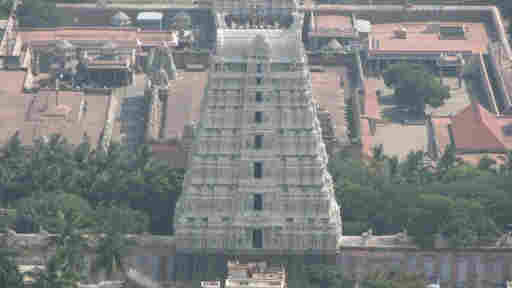

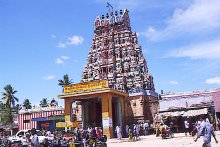
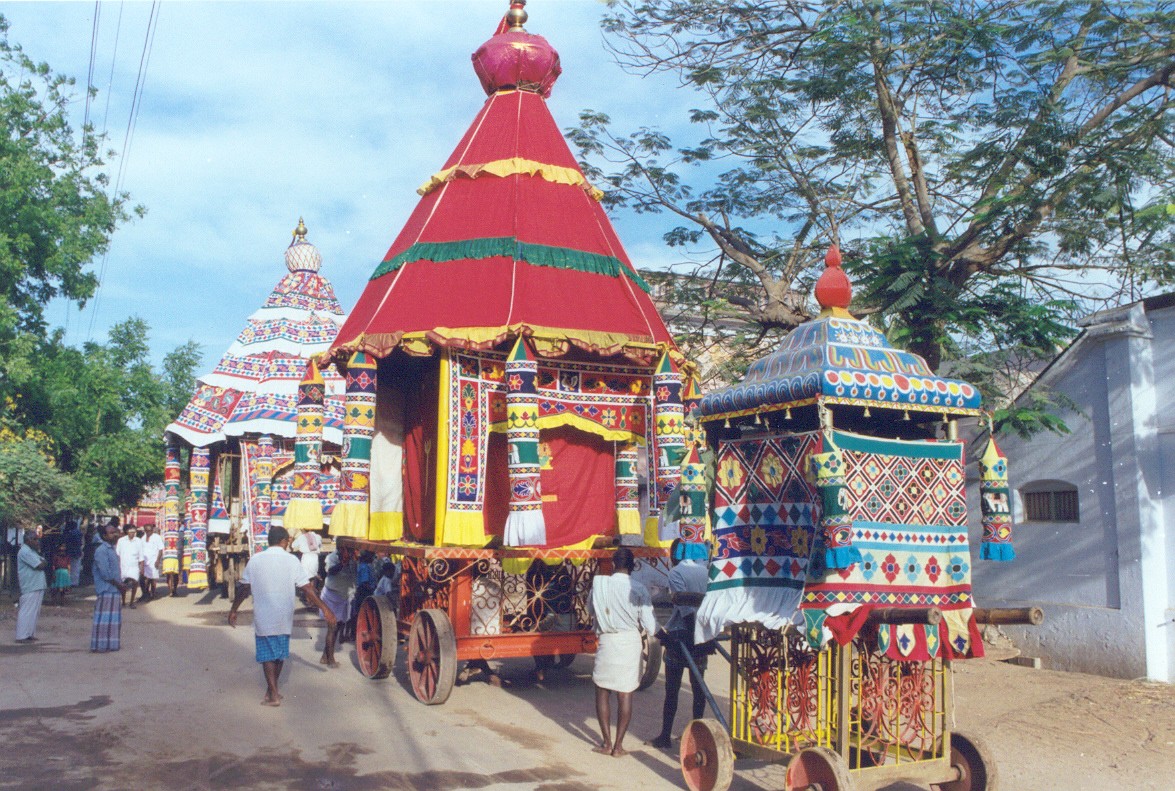 Templenet presents a
Templenet presents a 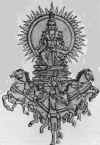 Tour nine ancient temples in the erstwhile Chola region of Tamilnadu - associated with the Navagrahas central to astrological beliefs. Seven of these date back to the Bhakti movement of the 1st millennium CE.
Tour nine ancient temples in the erstwhile Chola region of Tamilnadu - associated with the Navagrahas central to astrological beliefs. Seven of these date back to the Bhakti movement of the 1st millennium CE.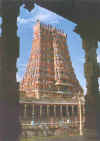 Explore beliefs and legends related to Shakti and the navaratri festival celebrated throughout the Indian subcontinent.
Explore beliefs and legends related to Shakti and the navaratri festival celebrated throughout the Indian subcontinent. Guest feature: A picture gallery of the entry towers to some of the Shivastalams glorified by the Tevaram hymns of the 1st millennium CE.
Guest feature: A picture gallery of the entry towers to some of the Shivastalams glorified by the Tevaram hymns of the 1st millennium CE.
 houses one of Asia's largest murals and is a treasure house of Vijayanagar art.
houses one of Asia's largest murals and is a treasure house of Vijayanagar art.